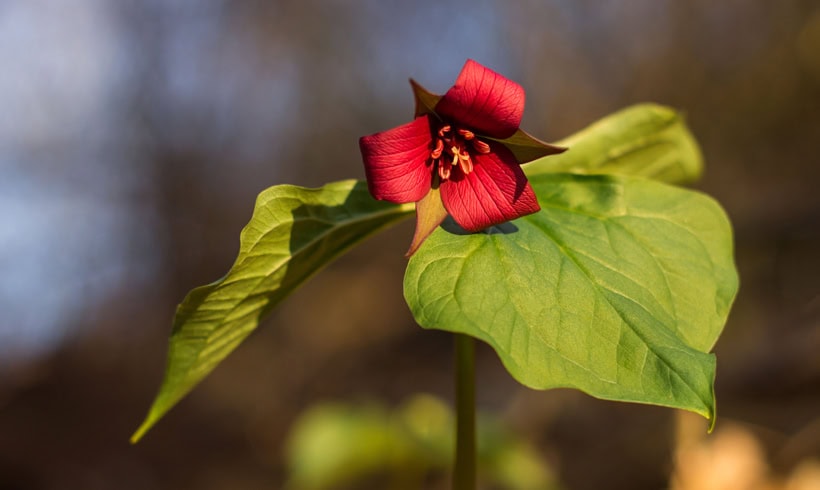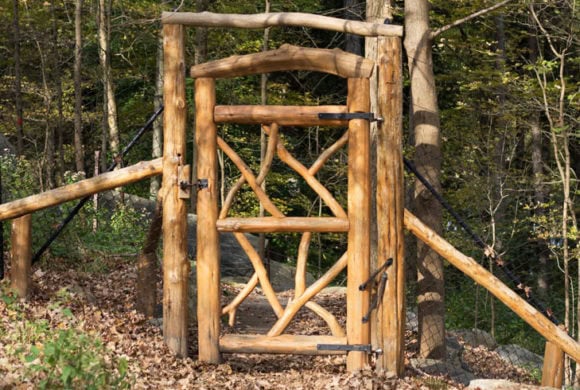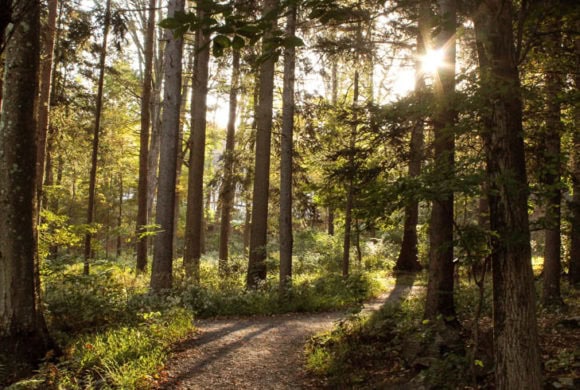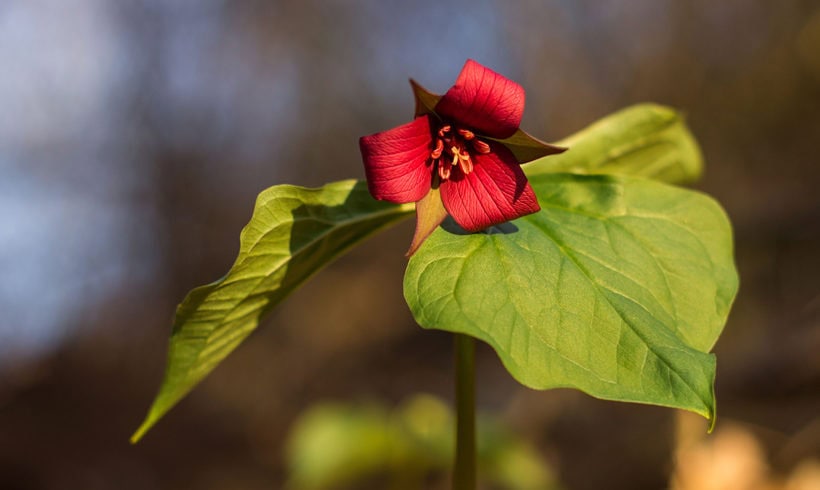Monitoring the progress of our habitat restoration site: Wildflower Woods
Wildflower Woods is an active restoration project and demonstration area that began in 2010 as a tool for teaching about healthy forests. This three-acre site within the preserve is unique because it is completely fenced off — allowing native plants to grow and multiply without being browsed by deer.

Wildflowers like the spring ephemeral Red Trillium (Trillium erectum) have become extremely rare in our region’s woodlands, but are making a comeback in the restoration site.
To the untrained eye, Teatown’s woodlands are a healthy oasis for the plants, trees, insects, and wildlife that call our preserve home. But it would become quickly apparent to someone with knowledge of northeastern habitat that Teatown’s preserve is heavily overrun with invasive plant species.
And we’re not alone. Invasive species are one of the greatest threats to the ecological health of our region.
About eight years ago, we committed to restoring native habitat in a heavily invaded three-acre site adjacent to the Nature Center that would be named “Wildflower Woods,” for its proximity to Wildflower Island.


The area was fenced off to exclude deer, and our science and stewardship team has since worked both internally and with several volunteer groups to remove invasive plants and sow the area with small trees, shrubs, ferns, and wildflowers to restore the understory.
Teatown’s Assistant Director of Environmental Stewardship, Danielle Begley-Miller, Ph.D., recently set out to survey the site and measure our progress. She also surveyed a high-traffic “control” area on the Twin Lakes Trail across from the Nature Center to give us an idea of how the rest of the preserve is doing in comparison.
Here’s what we found
There aren’t any non-native seedlings (young trees) in either of these areas, indicating a relatively healthy overstory (tree layer). The problem lies in the understory layer (ground covers, shrubs, vines, and herbs).
Definitions:
- Species richness is the number of unique species encountered during surveying
- Abundance refers to the total amount of each species encountered summed together by category (invasive vs. native)


In Wildflower Woods, one-third of all species encountered are invasive, two-thirds are native. And at any point when walking through the site, 50% of the abundance on the ground is going to be native, 50% will be invasive.
In high-traffic areas where we haven’t done any restoration, it’s even more invaded: 50% of encountered species (richness) are invasive in the control area and 75% of the abundance was invasive (25% native).
Habitat restoration is difficult and expensive, and it requires constant monitoring to keep it maintained. It is much easier to protect healthy habitat than it is to restore it, but without restoration, invaded areas will not improve.
To control all invasive plants on a 1,000-acre preserve would require vast amounts of resources (time and funding). In addition, white-tailed deer feed mostly on the native plants, which gives the invasives even more of a growing advantage than they already had.
While Wildflower Woods is showing signs of healing, the work is far from over. We recognize it is unlikely to someday claim Wildflower Woods as invasive free, but we can further increase the proportion of native plants in this area by removing dominant invasive species. We also recognize that some invasive plants in our region may be here to stay. That’s why we focus our efforts on removing plants that have the greatest potential to cause harm to our environment or focus in areas where we have high likelihood of successfully removing an unwanted species.
Get involved
Re-plant your gardens with native species
Native species prevent the spread of new invasive species. The birds and bugs that use native species as food/cover will thank you.


